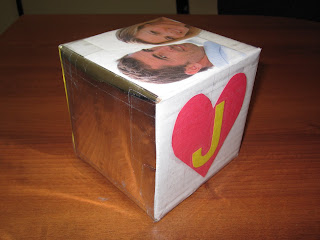
With all the new toys and gadgets for kids, books are in tough competition for your child's time. However, books are perhaps THE most important toys you will ever give your child. Starting a home library for your child shows him/her how important books are. Having books of his/her own in a special place boosts the chance that your child will want to read even more. Here's the trouble: having a good collection of children's books can be costly. At $10-$20 per book, with a collection of 30 books (at least!) you're looking at spending $300-$600!!! That adds up quickly. Here are some ideas for creating your own inexpensive home library.
- Borrow books from your local library on a regular basis. In addition, find out what services your local library provides such as children's story time, workshops, and so on. Who didn't enjoy going to the library to listen to stories as a child?
- Teach children to handle books appropriately so books last for years and years (and so books can be responsibly borrowed from the library). When you do buy books, their initial cost will seem a whole lot less if you can use them for a long time rather than having to replace scribbled-in, beat up, or worn books.
- Organize a children's book swap with friends, community groups, or your day care.
- If you're a child care provider, start a tradition. Tell parents that you think that reading to children each day (and having lots of interesting books available for children) is important. Ask parents to bring in one book "each Monday" or "the first day of the month." Make good use of these extra books (for the day, for a week, or whatever you and parents decide).
- If you're a child care provider, start another tradition. Ask parents to donate books their children have "outgrown" to your program. Their children may no longer be reading certain simple books but children in your care now (or at some time in the future) will enjoy them.
- If you're a parent, start a family tradition. Ask friends and relatives to consider giving your children books as gifts for their birthdays and on holidays.
- The price of children's paperbacks is low compared to the retail cost of hard-cover versions of the same book. Buy paperbacks when you can.
- Buy children's books on sale at book fairs (Scholastic).
- Buy some children's books at library sales. Call the library in your county and libraries in surrounding counties to see if they hold annual library fund-raising sales of books. If so, you can support a good cause and pick up some real bargains.
- Buy some books at second-hand bookstores and local yard sales.
One last thingRemember, it's
not quantity, but
quality books you are looking for in your library.
Please suggest the name of a quality children's book in the comments.Watch this video review on the book Tip Tip Dig Dig by Emma Garcia.



























